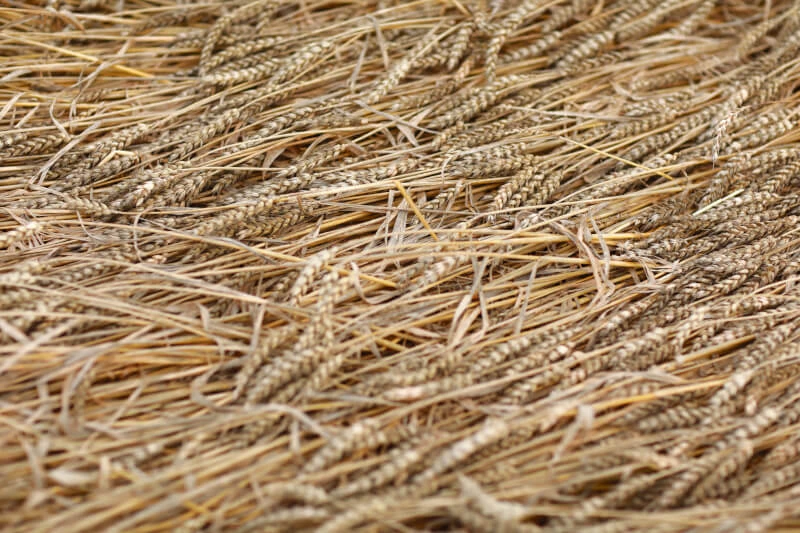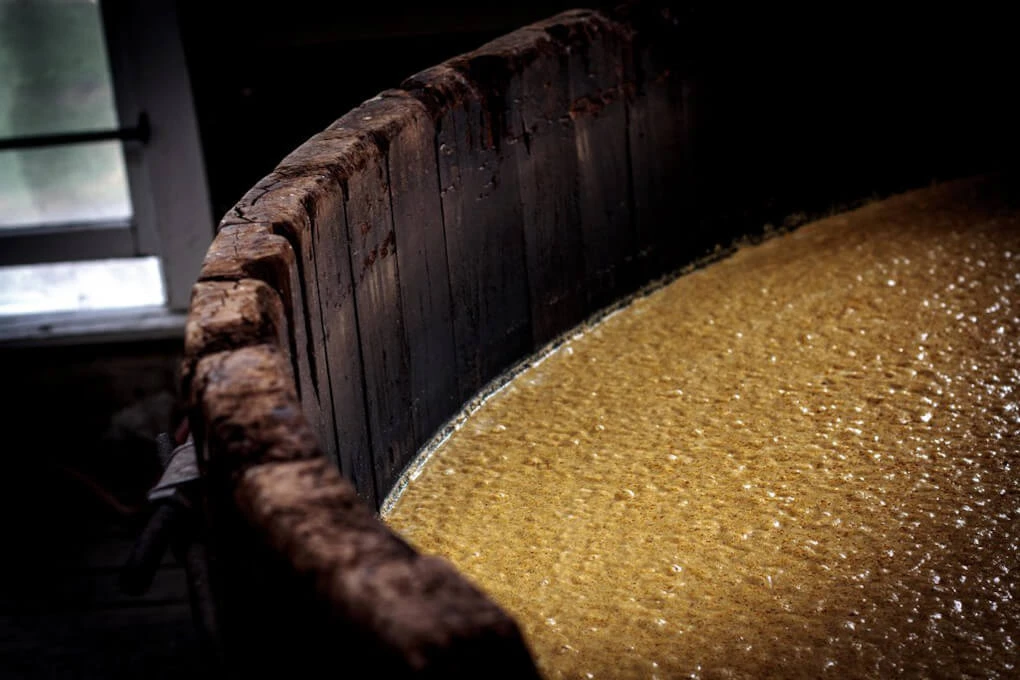Despite its peculiar pronunciation, this phrase has little to do with the beverage’s flavor. Spirits like American whiskey and Jamaican rum are fermented using the mysterious but widely misunderstood souring of the mash. This article defines sour mash and describes its function and application.
The Definition of Sour Mash Whiskey
Sour mash refers to the portion of old mash that is added to a new sweet mash combination before it is fermented with yeast. This sour mash from the past is what the new yeast is fed on, and it goes by a few different names.
The new mash’s PH is lowered by the addition of “the sour,” which also contributes to the fermentation process, which can take up to a week. This acidity inhibits the growth of microbes that would otherwise contribute flavors to the fresh mash. The consistency of a distillery’s products can be improved by reusing mash from earlier batches. They can ‘overlap’ and acidify the mash by adding the spent grains.
The Method
There are three main ingredients in a batch of sour mash:
- Used grains (sour)
- New mash (cereal grains and water)
- Yeast
When cereal grains are agitated in hot water, the fermentable sugars in the grains are liberated. After yeast consumes these carbohydrates, they ferment into alcohol over 2-7 days.
A rough beer with an alcohol content of about 8% is the result of this fermenting process. flavors of fruit and herbs develop, depending on the yeast employed. This beverage is generally known as a distillers beer in the United States.
Yeast grows well in low pH conditions. The PH of a new mash combination can be lowered by adding old grains from prior batches. This simple and inexpensive technique speeds up the fermentation process while protecting the beer’s delicate fruity flavor from contamination by undesirable microbes. Distillers typically mix them with yeast to generate an acidified mash combination in a ratio of 1 part old sour mash to 4 parts new sweet mash. Sour mash is created in this way.
To Make a Sour Mash, What Grains Do You Need?

- Cereal grains including corn, rye, and malted barley are often used in mash bills. These ingredients are what goes into making the new “sweet mash,” which is then acidified and fermented with yeast and old “sour” grains.
- Corn, rye, wheat, millet, oats, and malted barley are only some of the cereal grains that can be used to distill American whiskies (including bourbon). There are typically three grains used in certain proportions to get the desired flavor.
- A mash bill of 60% maize, 35% rye, and 5% malted barley would be typical of a high rye whiskey. Some bourbons, like Four Roses, have a greater proportion of rye within the mash bill, which contributes to spicy tastes.
Can You Tell Me How Long Sour Mash Ferments for?
The length of time whiskey is allowed to ferment depends on the desired flavor profile of the distillery. The timeframe also is affected by yeast quantity, fermentation temperature, and grain-to-water ratio. The flavor of beer and whiskey can be altered by adjusting the fermentation time.
Under 50 hours is considered short fermentation. At this point, the yeast has produced alcohol, resulting in a beer that is highly malty, cereal-tasting, and lacking in flavor complexity.
The average time for fermentation is 55–75 hours. This results in the same amount of alcohol being produced, but the beer’s flavor becomes much more nuanced. After 60 hours, yeast activity slows down, resulting in a beer with more fruity flavors.
A lengthy fermentation lasts more than 80 hours and ideally more than 168 hours. The sourness of the beer can be moderated or emphasized by the distillation process. For instance, Woodford Reserve uses a remarkable 144 hours of fermenting for their Kentucky straight bourbon, and their fundamental expression whiskey supposedly has 200 distinguishable flavors.
Is Sour Mash Essential to Making Whiskey?
Sour mash fermentation is used to produce the vast majority of premium American whiskies. Even though it isn’t explicitly stated on the bottle, you can bet that this method was employed. Distilleries may greatly improve the consistency of their mash batches by using sour mashing since it prevents spoiling due to bacterial development.
However, not all distilleries adopt this process. Some popular bourbon labels, such as Kentucky Peerless Distilling and Castle & Key Distillery, use the sweet mash’ technique. The mash is fermented with yeast instead of using ancient stillage, and the fermentation process is closely monitored for the presence of any bacteria. Scots and Irish distillers don’t use the sour mash technique.
Is Whiskey Made From Sour Mash?
Whiskey with a sour mash fermentation process. If you notice this term on a bottle or label, it indicates that the beer was fermented using the sour mash process during the wash’s production.
How Common is Sour Mash in Bourbons?
It is the sour mash process that produces the vast majority of bourbons. Jim Beam, Four Roses, Buffalo Trace, Michter’s, Eagle Rare, etc., are only some of the well-known brands of whiskey produced in Kentucky, which accounts for as much as 95% of all American bourbon.
To ensure uniformity in flavor from batch to batch of mash, many Tennessee whiskies ferment their ‘beer’ in this way during the distillation process. This word is most commonly used on the label of Jack Daniel’s Old No.7 whiskey.
Although’sour mash’ is commonly used in bourbon manufacture, it is rarely mentioned on the labels. In comparison to the brand’s history and ethos in advertising, this is a huge win.
Can You Explain the Distinction Between Sweet and Sour Mash?
The absence of sour milk results in the sweet mash. ‘Sweet mash’ whiskey is a misnomer because sour mash is the standard procedure for distillation. This method involves fermenting a mash bill with nothing more than water and yeast.
The fermenting process results in a cleaner, sweeter beer when using a sweet mash composition. Like the fermenting method used in Scottish and Irish distilleries, this method reduces acidity, allowing the spirit’s natural malty aromas to shine through.
Unfortunately, the sweet mash is more prone to bacterial infection, making it more challenging to manufacture consistently. Due to its lower acidity (it’s closer to neutral on the PH scale), sweet mash may encourage the growth of undesirable microbes. Because of the need for constant attention and proper sanitation of equipment, making sweet mash is more labor-intensive than other types of mash.
Where Did Sour Mash Come From?
Dr. James C. Crow, a Scottish chemist born in 1775, is credited for developing sour mash at the Woodford Reserve distillery in Kentucky, America, in the early 19th century. His systematic and scientific approach to whiskey production is thought to have led to the development and refinement of the sour mash procedure, which greatly increased the uniformity and quality of the final product.
Sour Mash Is a Crucial Component In the Whiskey Making Process
You now know that the use of sour mash in the production of American whiskey dates back more than two centuries and is a crucial and ubiquitous step in the process. It’s a strange idea, but it’s an old technique that prevents the growth of undesirable microorganisms and results in much more uniform mash batches. Beer used to make whiskey takes on distinctive aromas depending on the quality of fermentation and yeast propagation.
What began as an invention by Dr. James C. Crow has since become a standard method of making American whiskies at all of the major distilleries. Look for a reference to this tried-and-true method the next time you study a bottle. You’ll finally grasp its meaning after reading this!

